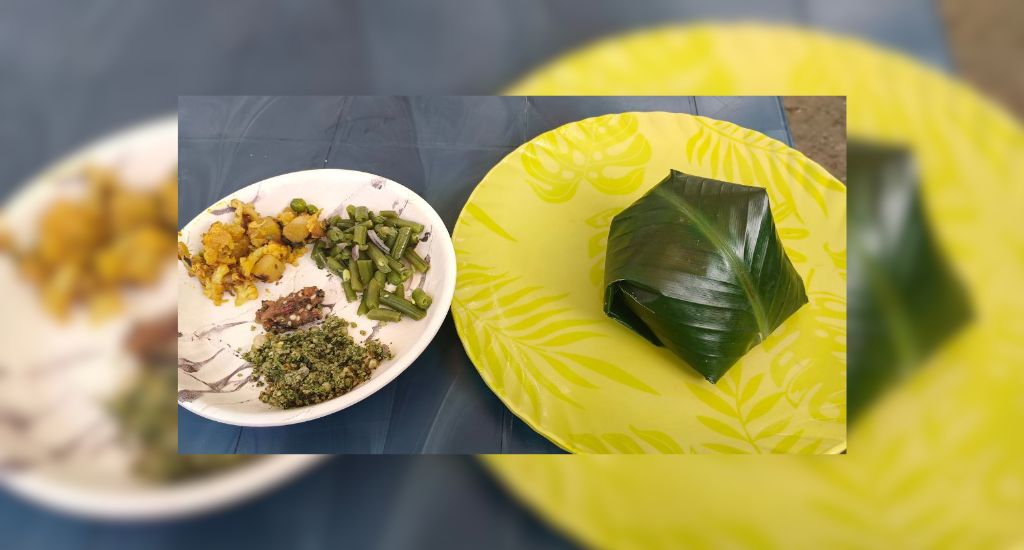
Tai Phake couple serves Assam tribe’s history on a plate
The Tai Phake is a community of around 2,000 people who are trying to preserve their identity and heritage with various efforts, serving their unique cuisine is part of that push.

The Tai Phake is a community of around 2,000 people who are trying to preserve their identity and heritage with various efforts, serving their unique cuisine is part of that push.
India’s Northeast is a melting pot of around 220 ethnic groups, each having its own gastronomic praxis. There are chili aficionados – think bhut jolokia or ghost pepper, a fiery native. And there are food daredevils and culinary mixologists.
Enriching the region’s taste and flavour is Tai Phake cuisine. This small Buddhist community of around 2,000 people, about 600 of whom live in Namphake village of eastern Assam’s Dibrugarh district, makes food tell the sui generis nature of the tribe’s history and culture.
Their cooking deploys the standard techniques – boil, steam, stew, smoke, grill, sauté, fry, cook low and slow, and toss right onto a wood fire. But Tai Phake food distinctly retains the tribe’s ancestry.
The Tai Phake, also known as Phakial, trace their origin to a swathe of Southeast Asia that is now part of Myanmar, Yunnan in China, and northern Thailand, an area ruled for centuries by warring empires. For reasons lost in time, small bands of Tai Phake travelled north through mountain passes of the Patkai range separating Myanmar and northeast India.

They settled in a region swaddling modern-day Assam and Arunachal Pradesh in the late 18th century. Namphake is their biggest village, where around 60 families live in wood, bamboo, and leaf-roofed houses on stilts, close to the Burhi Dihing river, a tributary of the Brahmaputra.
The centerpiece of Namphake is a pagoda with golden dragon gates and a meditating Buddha.
One of their signature dishes – steamed aromatic sticky rice wrapped in a leaf, served with a heady mix of fresh greens, meat or fish, and aromatic herbs, topped with coriander, lime juice, and slivers of ginger – encompasses everything distinctive about Tai Phake cuisine.
Namphake resident Ngikya Weingken and his wife Silwa run a food shack outside the Buddhist monastery. Their patrons are mostly visitors to the shrine and the village, which are drawing tourists from across India and abroad lately.

Silwa cooks on a gas stove in a small kitchen walled with holey bamboo interlace. Ngikya, 50, waits tables set on a lawn, shaded by outdoor umbrellas. The food is fresh, earthy, and flavourful – seasoned not with masala, hot or cold, but with plenty of herbs, or just left alone to let the ingredients speak for themselves with a teasing of salt and chili.
“We have a rich culture and heritage, but people hardly know us. We serve food in a traditional way. Rice wrapped in Kou Paat (the broad leaf of a plant from the arrowroot family) and a variety of home-made chutneys from ingredients sourced locally,” said Ngikya.

Tai Phake food is a locavore’s delight. The people are largely farmers and eat fresh from the farms. The fish is the freshest catch from the Burhi Dihing, the Brahmaputra, and the ponds dotting the landscape. The families rear poultry for meat and eggs, as well as pigs and goats. The birds and animals are free range and one can make out from the taste.
Called Kai Tom, and lazily referred to as hot and tangy boiled chicken in a vegetable stew, the dish, like many others, is a complex fusion that tells a history, ingredient by ingredient. The bamboo shoots betray a hint of Southeast Asian culinary influence, while the boiled meat, vegetables, and chili complement the humid weather.
Kai Sian is the drier version, stir-fried chicken in mustard oil and a mix of vegetables, greens, onion, herbs, and local spices. A popular starter is Mu Sian, fried pork, and vegetables.
The boiled Paa Tom fish gravy, its sour sibling Paa Som, and the chutney-like Paa Phan mashed fish with condiments and bamboo shoots reign supreme on the marine menu.
For vegetarians, a must-try is Pak Som, a hot-and-sour vegetable stew, and the Tho Neen soup made of lentils.

Rice is the staple and the Tail Phake can do wonders with it. There’s Khao Tek (popped rice), Khao Haing (steamed rice), Khau Ho (rice steamed in a leaf and shaped like a ball), Khao Lam (cooked in a bamboo stem). The list goes on.
Ngikya uses the Khao Sem variety of rice grown organically in local farms. “Their food is completely organic. No chemicals. The Tai Phake is a forgotten part of our society. Efforts are necessary to preserve their age-old culture,” said environmentalist Mridu Paban Phukon, a regular at the eatery.
Sujay Verma, a tourist from Kolkata, said he had not tasted food so delicious and distinct before. “The simplicity of the food leaves the taste lingering for a long time. This culture must be promoted.”
Ngikya and his wife have built a small, thatch-roof museum close to his shack. It displays items like fishing nets, baskets, and other objects used by his ancestors. ”Entry is free because we want visitors to know more about our lifestyle and culture,” Silwa said.
The lead image at the top shows taipahake food served in Ko leaves (Photo by Gurvinder Singh)
Gurvinder Singh is a journalist based in Kolkata.